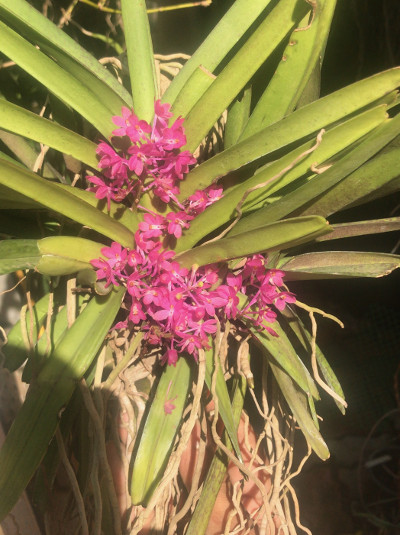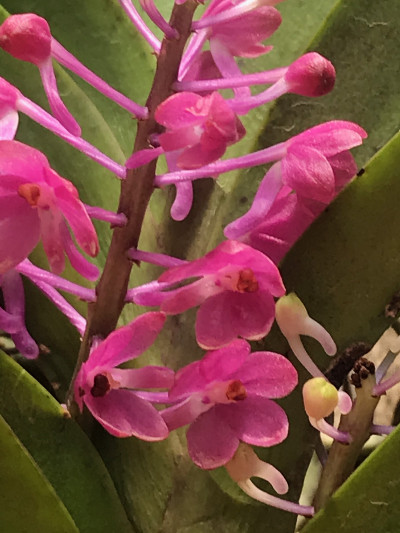Orchid Care for the month of April |
|
| Orchid Care for this month (April).
1) We are in the phase of peak dry, hot summers of Bangalore combined with very low humidity (<15%) during the day 2) New growths and buds are susceptible to sun burn. Adding a additional layer of shade cloth during this time would be beneficial 3) Water thoroughly and multiple times during the day. Humidity usually is the lowest around 3-5 PM and watering well around that time would help prevent excessive water loss 4) Some of the deciduous Dendrobiums would have started putting out new growths. keep a close watch on the new growths for signs of pest attack. feeding a very light nutrition (seaweed extract) on improving their rooting would help them 5) Dry season is the peak season for mites and there are few orchids that are mite magnets (Catasetum, Gramattophyllum, Phalenopsis, Thunia etc). Keep a close watch on the under side of the leaves. jet spray of water in the underside would help prevent. periodic preventive spray of neem based pesticide could largely help 6) Catasetums and allied genera should have put put out new growths with roots > 3inches. Can start potting them and start feeding them 7) Keep a couple of bottles of hydrogen peroxide handy for any quick bandaid treatments for bacterial and surface treatments of fungal infections 8) Remove dried leaves/sheath during this time as dried material absorbs more water and invite fungal and bacterial infections. Keeping the grow area clean would help 9) Start feeding NPK and micronutrients at a half dose till establishing of good roots. Calcium and Magnesium can be fed alternative weeks 10) Avoid using any oil based pesticide (Neem oil, Horticulture oil) /growth enhancers (Fish emulsion) during this season of peak summer. Use alternative options where available |
Species of the Month |
|
 Vanda ampullacea (Roxb.) L.M.Gardiner |
 Vanda ampullacea (Roxb.) L.M.Gardiner |
| Vanda ampullacea – Vein like Vanda (lip spur)
Distribution: These are normally from mainland Asia with India, Myanmar, Thailand, Laos and Vietnam being the major distribution pockets. In India, NE is the natural home of this species. Generally grows at an altitude of 300-1500 M as an epiphyte. In its natural habitat the seasonal conditions are distinct. Plant:A great, miniature sized, hot to cool growing, vandaceous plant, with short, simple, several leafed stems carrying suberect, distichous, ligulate, acutely bifid or truncate and apically toothed leaves that are keeled on the underside and grooved on the top that is a spring through summer bloomer on an axillary, 3 to 8 [8 to 20 cm] long, shorter than the leaves, compact inflorescence that have many small flowers. Culture: The species prefers intermediate to cool growing conditions. They require bright light, preferably full morning sun and filtered one later. The plant has to be watered copiously during growth stage and after the current year growth switches to maturity, watering can be reduced. Higher light levels, leaves tend to show spotting and is normal. Pictures and Article: Sriram Kumar |
|